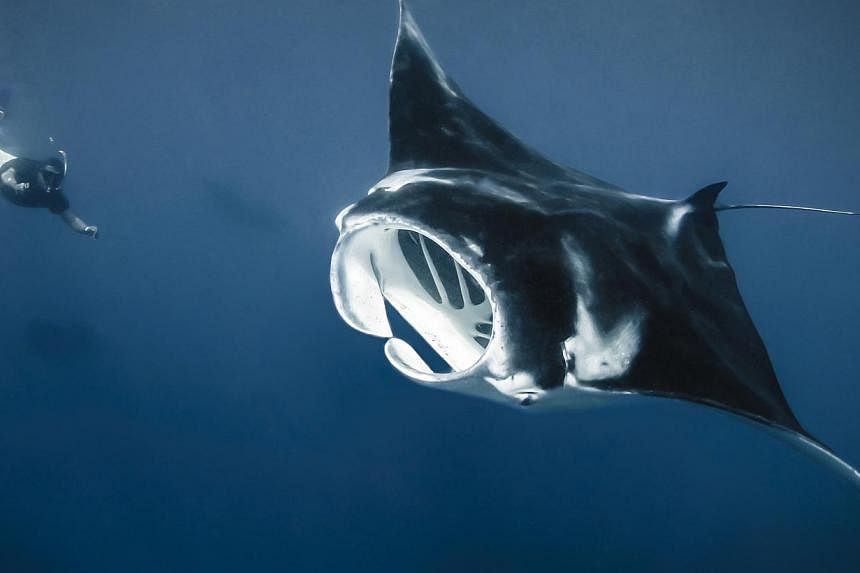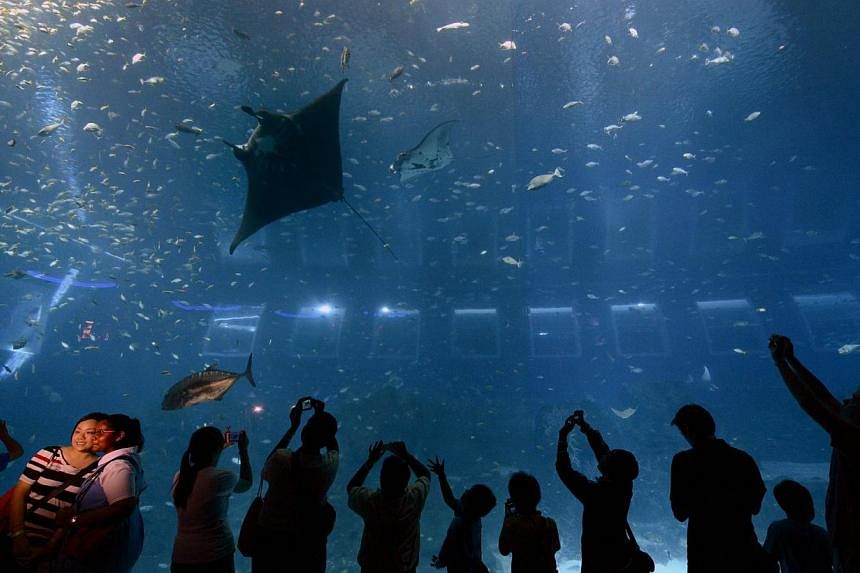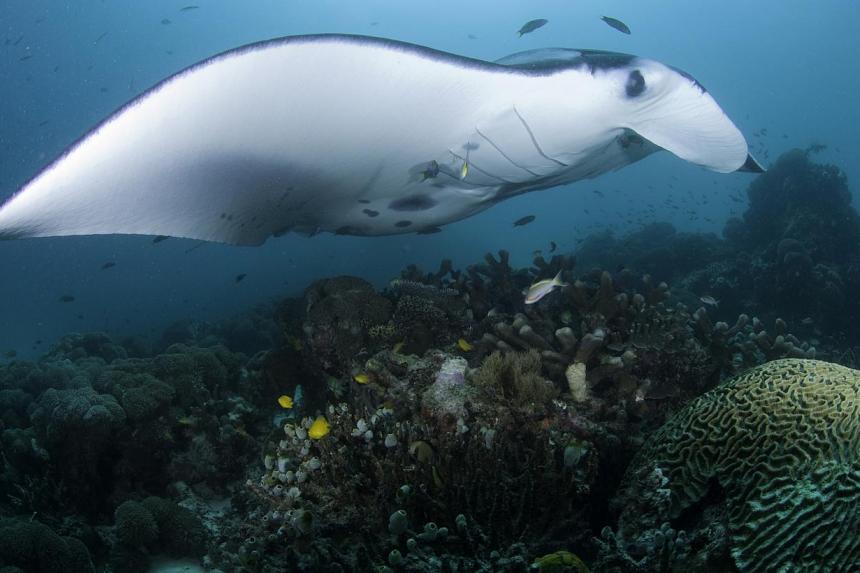Resorts World Sentosa's SEA Aquarium, in collaboration with United States-based environmental group Conservation International, has embarked on a project to learn more about manta rays.
The project is the first under a five-year partnership between the two organisations that was signed in January, and it aims to gain insight into the rays' migratory patterns and how to better protect them.
Here are five interesting facts about these gentle giants of the sea, as explained by Professor Chou Loke Ming (NUS marine biologist) and Dr Mark Erdmann (senior adviser of Conversation International), IUCN
1. There is more than one type of manta ray
There are two species of manta ray: the reef manta ray and the oceanic manta ray. The oceanic manta ray is the larger of the two, with a width span of up to 7m. The reef manta ray's width span is about 5.5m. Both are listed as "vulnerable" on the International Union for Conservation of Nature (IUCN) Red List, which means they are considered to be facing a high risk of extinction in the wild.
2. They are slow reproducers
Manta rays reproduce very slowly - they reach sexual maturity only between eight and 12 years of age and deliver only one pup every three to four years.
3. They are valued in Chinese medicine
Manta rays are being hunted for their gill rakers, which are used in Chinese medicine. Practitioners believe consuming the cartilage supporting the gills will boost the immune system and help reduce toxins and fever.
4. They belong to the same family as sharks
Manta rays have a skeleton made up of cartilage, just like the shark. This is why both manta rays and sharks are classified under the same class of fish.
5. They are a harmless 'devil'
Manta rays are sometimes known as the "sea devil" because of their horn-shaped fins. They are filter feeders that feed only on plankton. They do not have any stinging barbs and are harmless to humans.
Related links:





